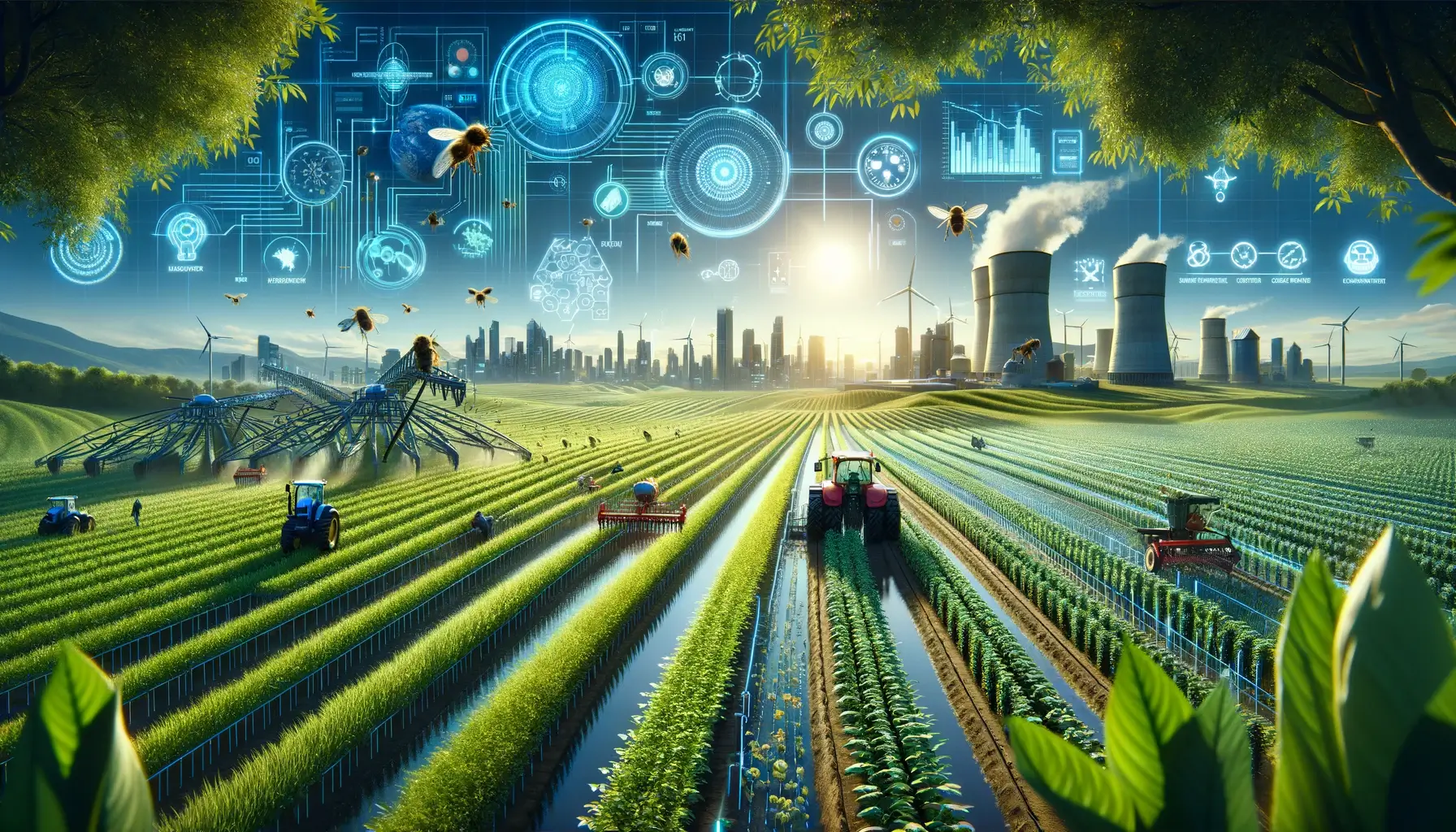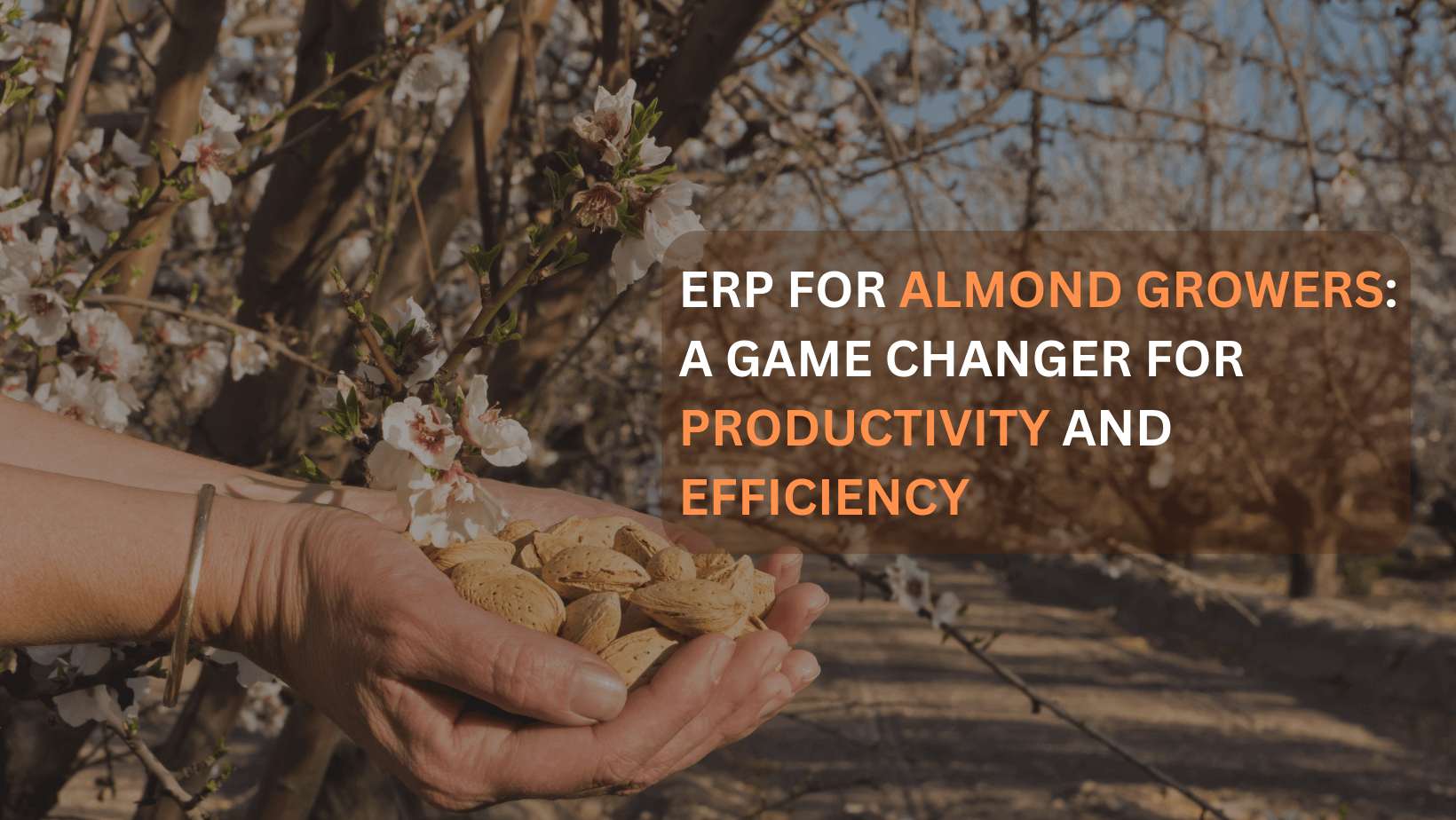Providing a rapidly growing human population with a consistent and healthy supply of food is a huge challenge.
How we meet this challenge and at the same time protect the environment, preserve biodiversity and take into account climate change are matters of utmost importance.
So, what is the optimal solution to this problem? The answer lies in integrated crop management (ICM).
Integrated crop management offers a holistic approach to sustainable agriculture.
It takes into account the situation across the entire farm, including socioeconomic and environmental factors to deliver the most profitable and eco-friendly approach for long-term benefit.
ICM is primarily focused on crops but is equally important on mixed farms because livestock are consumers of crops and providers of organic nutrients.
Integrated crop livestock management systems (ICLS) are a part of ICM and are strategies used to exploit the synergy of plant, animal, and atmosphere interactions in farming. These systems can be catered to both startups and SMEs (small and medium enterprises).
Moreover, if you own a crop, livestock, mixed farm, or indoor farm, software like AgriERP can help you establish an ICM approach towards your farming practices.
Integrated crop management definition
Integrated crop management (ICM) is an agricultural system that focuses on maximizing profit while implementing sustainable and environmentally friendly farming techniques that are not input extensive.
ICM stems from precision agriculture, which promises economic benefits for the producer and environmental benefits for the consumer through improving the efficiency of input used.
Although ICM is a form of precision farming, rather than focusing on the individual inputs, it examines the entire farm operation. Hence the main focus of ICM is on the planning aspect of farming.
Rapid improvements in agricultural efficiency and productivity in the past 50 years have been input-intensive. This approach has led to excessive consumption of limited resources, damage to wildlife and landscape, and a disruption of ecosystems due to decreased biodiversity. ICM is a vital agricultural system because it aims to change this.
Integrated crop management allows farming to be practiced in a way that protects the environment. At the same time, it maintains the quantity, quality, and price of produce to preserve the overall economic viability.
Although ICM involves the whole farm and is not specific, its approach differentiates based on the location of the farm and factors like the type of soil, type of crop, weather, etc.
Despite the differences, there is a common theme of using local farming techniques and making them more sustainable and resilient through research and technology. These new techniques are what make up integrated crop management practices.
Best-integrated crop management practices
Integrated crop management practices enable farmers to run a profitable business with responsibility and sensitivity towards the environment.
Now that the importance of integrated crop management practices has been established, let us explore some of the best practices that aid ICM.
1. Crop Rotation
Crop rotation is the practice of growing different types of crops on the same plot of land to preserve nutrients of the soil and prevent its exhaustion.
A diverse crop rotation can enhance and maintain soil fertility as well as reduce the impact of weeds, pests, and diseases by interrupting pest and disease life cycles.
Pros
- Improves soil quality
- Better soil structure
- Prevents water loss
- Increases crops yield in the long run
- Protects against weeds and pets
- Reduces need for fertilizers and pesticides
- Increases diversification
- Reduces risk of soil erosion
Cons
- Significant initial investments
- Crop rotation requires a higher number of machines
- Experience required for work
- Unexpected weather may destroy sensitive plants
2. Soil Cultivation
This focuses on maintaining soil structure, stability, and fertility. It is a central element of an ICM plan.
Farm soil mapping and analysis are part of soil cultivation. Soil includes Ph tests, measurement of lime requirement, and verifying the quantity of minerals like calcium, phosphorus, and potassium that are already present in the soil.
Soil cultivation also includes identifying the risks of erosion by wind or water in order to minimize them. These preventive measures include growing grass between crops or planting specific erosion breaks.
Soil structure is heavily influenced by tractor size, tire pressure, and cultivation technique, and timing. It is ideal to alternate plowing and non-inversion cultivation techniques in rotation. This is because non-inversion cultivation requires less energy and does less damage to soil compared to plowing. However, plowing is more effective in destroying weeds. Thus, alternating these two techniques is ideal.
Pros
- Breaks up the compacted soil particles
- Prevents soil from eroding
- Makes sprouting of new seeds from soil surface easier
- Incorporates air and organic matter into soil
Aids pest elimination
Cons
- Increases chances of soil compaction due to erosion
- Leads to excess water loss through soil
- Increases chances of dormant weeds germinating
3. Crop Nutrition
Crop nutrition involves a fertilization plan designed to match the major nutrients required by the growing crops. It also includes regular soil analysis to determine the nutrients available in the soil.
The use of fertilizers, both inorganic and organic(manure) is included in crop nutrition. Nitrogen, phosphorus, and potassium are the three main nutrients delivered by inorganic fertilizers.
Pros
- Transportation, storage and application is easier
- Multiple harvests per year can occur
- Rapidly effects crops
- Fulfills all nutritional requirements of crops
- Ensures high yield
- Water soluble
- Replaces nutrients used up by soil
Cons
- Increased risk of ground water pollution
- Inorganic fertilizers are not natural and an excess can cause to toxicity
- Excess can damage surrounding flora and fauna and decrease biodiversity
- They are expensive
- May harm microorganisms in the soil and decrease soil fertility in the long run
4. Crop Protection
Crop protection includes protecting crops from weeds, pests, and diseases. It is a major component of ICM practices.
Prevention through crop rotation and choice of crops being grown is the first line of defense. The second line consists of weed mapping, disease or pest forecasts, and the use of diagnostic kits.
The last stage consists of control through insecticides and pesticides.
Pros
- Help eliminate insects, diseases, weeds and other pests
- May increase plant growth
- Chances of greater yield
Cons
- Pesticides and insecticides can be detrimental to farmers health
- They may contaminate crops
- May lead to soil pollution
5. Wildlife and Landscape Management
ICM involves planning a program for the entire farm, including the land that is not used for farming. This is done to conserve a certain degree of biodiversity.
The landscape is also managed by preserving wooded areas, ponds, and streams in the farmland.
Pros
- Prevent weeds and fungi from spreading and infecting crops
- Conserves and increases biodiversity
Cons
- The process may be expensive
- An expert/specialist may need to be hired
6. Energy Resources
Energy resources include the type of energy used to fuel the farm operations. These energy sources can be renewable, which include wind or solar power, or non-renewable, which includes fossil fuels.
ICM aims to make energy use as efficient as possible. It prioritizes exploring renewable energy options and saving energy through in-depth analysis of farm operations to determine the proportion of fuel spent on each level.
Energy resources also include waste disposal, with the primary aim being to recycle a maximum amount of material.
Prevention of farmland by pollution due to over usage of insecticides, pesticides, and fertilizers is also included.
Pros
- It generates no emission
- Sustainable
- Decreases carbon footprint
- Reduces air pollution
- Combats climate change
Cons
- It may be unreliable
- It is expensive
- Requires a huge upfront capital
- Needs a lot of area for installation
- Expensive costs of storing
7. Organizing, Auditing, and Assessing
Integrated crop management practices focus on applying a planned approach to focus on long-term objectives and identify problem areas.
This includes monitoring all levels of the farm operation and keeping staff up to date with any newly implemented farming techniques.
Pros
- Allows you to keep track of your farming process and detect any mistakes
- Helps prevent future mistakes, good for risk mitigation
Cons
- It can be long and tedious
- Expert may be required which can be expensive
What are integrated crop livestock management systems for startups and SMEs (small and medium enterprises)?
Integrated crop livestock management systems (ICLS) are implemented in mixed farming and are a part of ICM. ICLS is a sustainable agricultural practice that relies on the synergistic relationships between plant and animal systems to amplify the effect of natural processes like nitrogen and carbon fixation.
ICLS work is based on the connections between livestock, crops, and the surrounding environment. The key principle is that the output of one system is used as the input of another. For example, part of the output of crop farming would be used as a source of food for livestock and the manure from livestock would be used as an organic fertilizer for the crops.
Integrated crop livestock management systems serve several benefits for farm owners. These range from increased diversity and resilience, improved soil health, increased availability of carbon and nitrogen, and effective recycling of organic matter on the farm.
Depending on the management of the farm and the desired benefits, there are different ways to practice mixed farming and integrate crops and livestock.
With this being established, we have compiled a set of major integrated crop livestock management systems for startups and SMEs.
Integrated crop livestock management systems for startups and SMEs
On-farm mixing
On-farm mixing refers to both crops and livestock being present on the same farm.
On-farm mixing is specifically used in low external input agriculture, where individual farmers benefit the most from recycling the resources they have on their farms.
Examples include farmers using the dung from their livestock as a source of organic fertilizers (manure) for their crops. These crops will in turn feed the livestock through crop residues.
Between-farm mixing
Between-farm mixing occurs when livestock and crops have separate farms. A classic example is in the case of specialized farms in countries like the Netherlands.
Between-farm mixing occurs mostly in high external input agriculture systems to reduce the waste disposal problems specialized farms face.
Crop farmers may use dung from cattle farmers after a series of negotiations in which they may have to trade in their crop residues as fodder. These negotiations take place between separate farms, hence the name between-farm mixing.
Mixing within the crop and/or animal systems
Mixing within the crop and/or animal systems means that a farm either grows different types of crops or raises different types of livestock.
A prime example of this is at chicken-fish pond systems, where chicken dung fertilizes the fish ponds.
Diversified systems
Diversified systems consist of crop and livestock components that co-exist as separate entities from each other on the same farm.
Diversified farming is common in high external input agriculture systems. In this case, the key reason behind the mixing of crops and livestock is for risk mitigation and not recycling of resources.
Integrated systems
Integrated systems are the primary examples of integrated crop livestock management systems. The primary reason behind integration is to recycle resources efficiently.
Integrated systems are seen on mixed farms, meaning a single farm will have both crops and livestock.
A classic example of ICLS in integrated systems is where land is rotated over space and time for crop, livestock, and pasture use.
In this case, crop residues provide animals with fodder from grass and nitrogen-binding legumes. Animals provide the crops with draught and manure.
Examples of these kinds of systems are the grazing of livestock under plantation trees like rubber, oil, palm, or coconut. This is commonly found in Southeast Asian countries.
Another common example is found in Malaysia. Here, livestock is integrated to consume the vegetative ground cover under tree canopies. This increases overall productivity and can save up to 40% of the cost of weed control.
Conclusion
Whether you run your farm as a startup or as an SME, integrated crop management offers an excellent holistic approach to farming that enables you to generate profit through a sustainable and eco-friendly method.
ICM systems like integrated crop livestock management systems allow you to decrease wastage and effectively reuse and recycle materials on your farm. This practice ensures a cost-effective and efficient farming experience for both startups and SMEs.
The type of integrated crop livestock management system you choose to use depends on how you want to manage your farm and what benefits you want to prioritize. A high external input agricultural system that is commonly found in SMEs may be better suited to diversified farming or between-farm mixing. A low external input agricultural system that is more commonly found in startups may be better suited to on-farm mixing. Integrated systems are flexible and can be effective for both startups and SMEs.
Whatever integrated crop livestock management system you decide to use, you can always look to your local crop management company for advice. This will ensure that you can come up with a good strategy for your farm, which is the key to being able to practice integrated crop management effectively.



